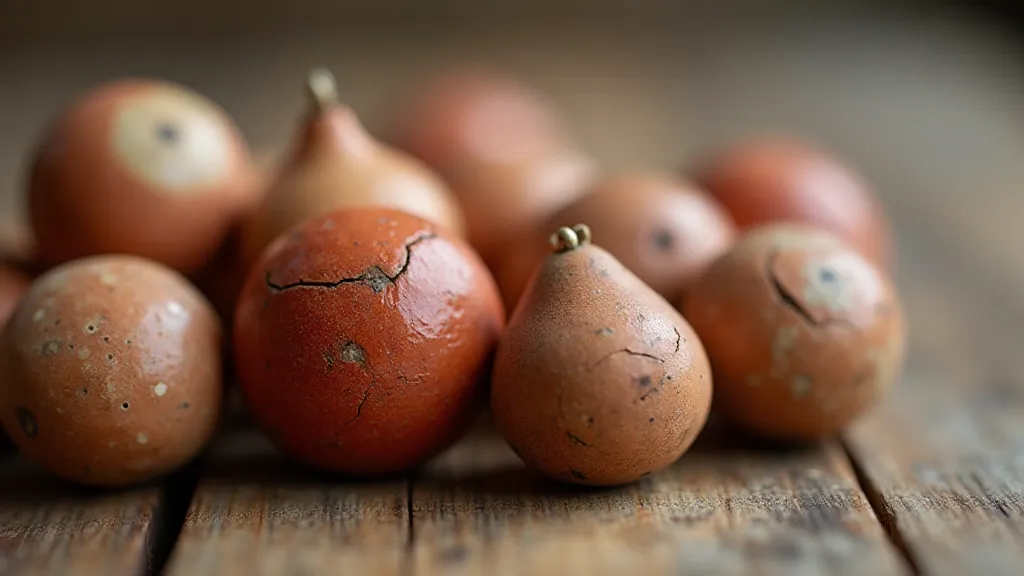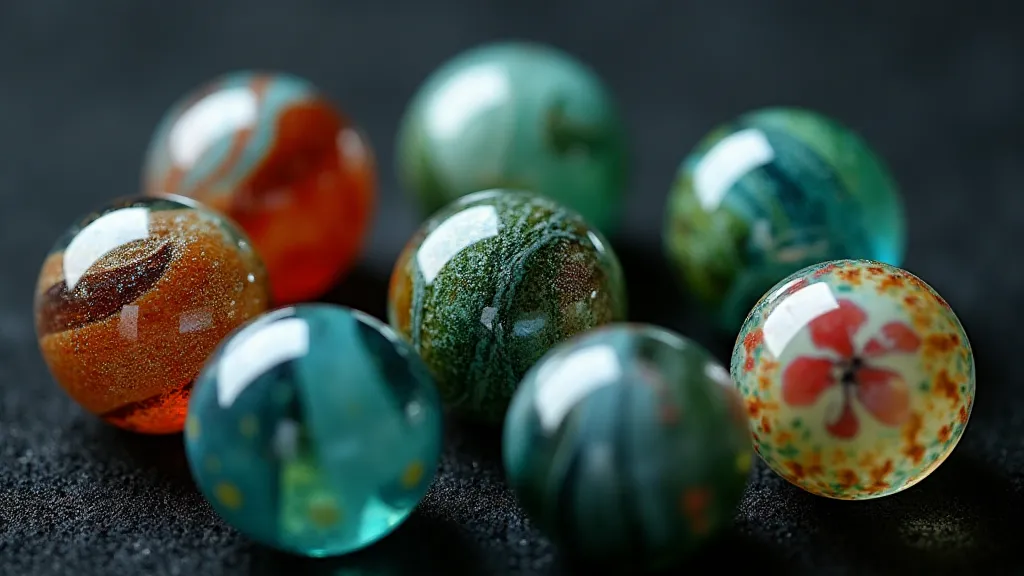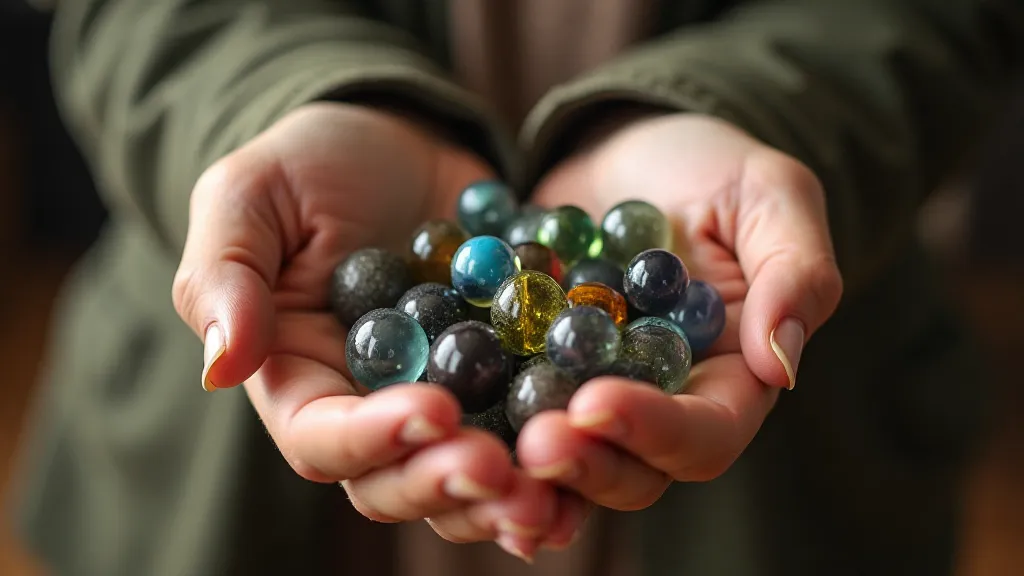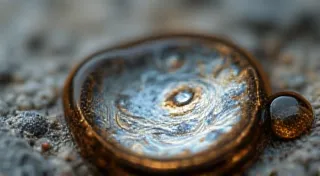The Imprint of Time: Dating Antique Marbles Through Manufacturing Styles
There’s a quiet magic held within each antique marble. More than just spun glass or baked clay, they’re tiny capsules of history, echoing the ingenuity and artistry of bygone eras. Holding one in your hand isn’t just feeling a smooth, cool sphere; it’s connecting with the hands that shaped it, the workshops where it was born, and the lives it’s witnessed. But how do we unlock that history? How can we estimate a marble’s age when most bear no date stamp? The answer lies in understanding the evolution of manufacturing styles, a detective’s game of observing subtle clues left behind by time and technology.
I remember my grandfather, a quiet man who found solace in collecting. His prized possessions weren’t diamonds or fine art; they were jars filled with marbles. As a child, I’d spend hours mesmerized by their colors and patterns, feeling a profound sense of wonder. He’s gone now, but the memory of those jars, and the stories he’d occasionally share – fragments about German swirls and Fenton cats-eyes – remain vivid. He didn't possess a formal education on marbles, yet his intuitive understanding of their ages, based purely on observation, was surprisingly accurate. It sparked a lifelong fascination for me.
Early Days: Hand-Crafted Clay and Simple Glass (Pre-1880)
The earliest marbles, predating the mid-19th century, were predominantly made of clay. These were often crudely formed, sometimes hand-rolled and fired, and often painted with rudimentary designs. Identifying these can be tricky as they’re easily damaged and often found in poor condition. Their value lies less in rarity and more in their historical significance – a tangible link to a time when toys were truly handcrafted and accessible to all. These simple clay marbles often feature reddish-brown tones, indicative of the clay used and the firing process. They weren't meant to last, but they provided a fleeting moment of joy for children of a simpler age.
The advent of glass manufacturing in the 18th and early 19th centuries introduced a new level of potential, although early glass marbles were still largely handmade. These were often "blanks" – perfectly round spheres of clear or slightly colored glass, without any elaborate designs. Identifying these can be challenging as the methods for achieving perfect roundness were still being perfected. Minor imperfections and slight oval shapes are common hallmarks of these early glass marbles. The colorations were achieved through adding metallic oxides to the molten glass – often resulting in muted tones like amber, olive green, and chocolate brown. Think of the resourceful glassblowers, working in dimly lit workshops, using techniques passed down through generations – each marble a testament to their skill.

The Rise of Machine Production and Patterned Glass (1880-1920)
The late 19th century witnessed a revolution in marble manufacturing. The introduction of machinery – initially, simple rotating devices – allowed for greater efficiency and consistency in production. This era saw the emergence of "machine-made" marbles, which, while still bearing the imprint of human artistry, were produced on a much larger scale. The colors became brighter and more vibrant thanks to improved chemical formulations and better control over the glass-making process. Common patterns during this period included swirls (often achieved by manipulating molten glass as it spun), strips, and simple color combinations.
German manufacturers, particularly those in Lauscha, became world leaders in marble production during this time. Their marbles are renowned for their intricate designs and consistent quality. Identifying marbles as "German" can be complex, as many American manufacturers copied German styles. However, certain characteristics – such as particularly vibrant colors and a unique clarity of glass – can be suggestive.
The advent of sulphide marbles – glass marbles incorporating small, often animal or figure-shaped, decorations made of sulphide – became a significant trend. These were particularly prized and are considered highly collectible today. The Sulphides, often intricate and skillfully crafted, offered a glimpse into the popular culture and artistic tastes of the time. Imagine the artists meticulously crafting these tiny figures, knowing they’re destined to become treasured possessions for children.
The Golden Age of American Marble Manufacturing (1920-1950)
The early to mid-20th century is often considered the “Golden Age” of American marble manufacturing. Companies like Fenton, Christensen, and Akron Glassworks dominated the market, pushing the boundaries of design and color. This period saw the introduction of a dazzling array of patterns, including “cats-eyes” (marbles with a swirling, eye-like pattern), “rainbows,” and “commies” (marbles with intricate swirls resembling a complex pattern). The level of craftsmanship achieved during this era is truly remarkable.
Fenton marbles, known for their exceptional color vibrancy and intricate designs, are particularly sought after by collectors. Identifying genuine Fenton marbles requires a keen eye and familiarity with their hallmark characteristics, such as specific color combinations and subtle variations in design. The quality of the glass used, the precision of the patterns, and the overall feel of the marble are all clues to its origin.

Post-War Era and Beyond (1950-Present)
The post-war era saw a decline in hand-crafted marble production as mass production techniques became even more sophisticated. While machine-made marbles continued to be produced, the artistry and craftsmanship of earlier eras diminished. The focus shifted towards affordability and quantity, rather than quality and unique design. The colors became more subdued and the patterns less intricate.
Identifying marbles from this period can be challenging, as the differences between manufacturers often become subtle. Examining the overall quality of the glass, the precision of the patterns, and any identifying marks can provide clues to their origin. While these later marbles may lack the charm and rarity of their antique counterparts, they still offer a glimpse into the evolution of manufacturing techniques and the changing landscape of the toy industry.

A Collector’s Detective Work
Dating antique marbles is rarely an exact science. It’s a process of gathering clues, analyzing manufacturing styles, and drawing informed conclusions. Look for subtle details – the clarity of the glass, the precision of the patterns, the presence (or absence) of identifying marks. Research common manufacturing techniques and familiarizing yourself with the hallmarks of different manufacturers is crucial. Most importantly, develop an eye for detail and a deep appreciation for the craftsmanship that went into creating these small treasures. Each marble tells a story, and it's our job as collectors to listen.
My grandfather’s intuitive ability to date marbles wasn't about memorizing facts; it was about developing a sensitivity to the subtle nuances of craftsmanship – a feeling, almost. And that, I’m beginning to understand, is the true essence of collecting: not just acquiring objects, but connecting with the history, the artistry, and the human stories they represent.





